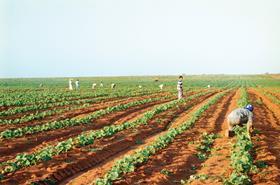
Melon producers and exporters in Central America should stop competing with each other and join forces in order to guarantee their future survival on the European market. That is the view of Mauro Suazo, chairman of Suazo Agro International consultancy.
With higher production and transport costs and longer transit times eroding the profitability of shippers in Guatemala, Honduras, Costa Rica and Panama in recent years, he argued that they should set their differences aside and unite as a single supplier.
“For the last three decades, Central American melons have been a formidable source of fresh melons to Europe during the winter months,” he said. “However, for the last 10 years, their competitiveness has been deteriorating rather rapidly. United as a region Central America is strong, but as independent growing/packing/shipping countries they are all rather weak.”
Speaking ahead of the XXIII Latin American Melon Growers and Exporters Congress which takes place in Panama on 2-4 September, Suazo said that while some suppliers had switched to growing LSL (longer shelf life) melons to make up for the longer voyage, this has come at the expense of taste, aroma, brix and other organoleptic qualities that European consumers demand.
He went on to say that while Brazil has always been perceived as Central America’s main competitor, the country was experiencing its own challenges such as the ongoing drought and unfavourable exchange rates.
The jury is still out on Africa, Suazo argued, but developing other sources of supply such as the Dominican Republic, Colombia, Peru, Ecuador and even Cuba could be an option to guarantee supplies of winter melons.
Inviting all players in the global melon industry to take part in next month’s congress, Suazo said he welcomed comments about possible solutions to the crisis affecting the Central American melon industry.



